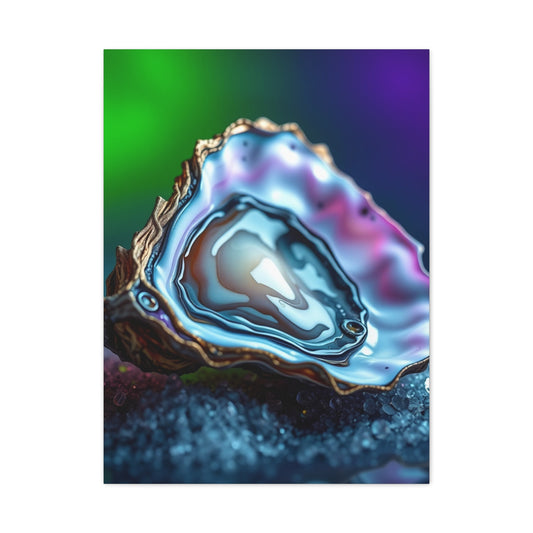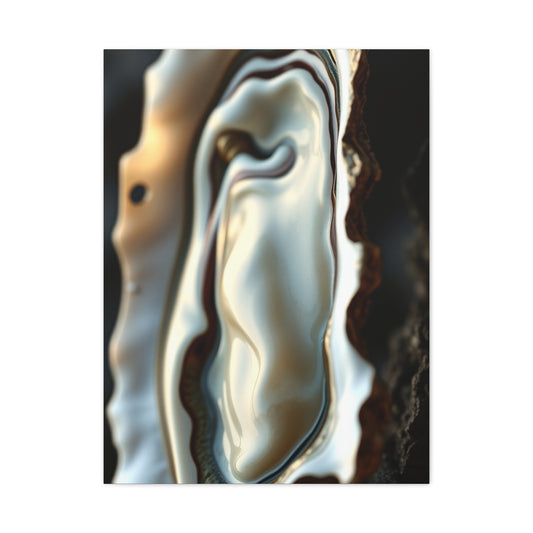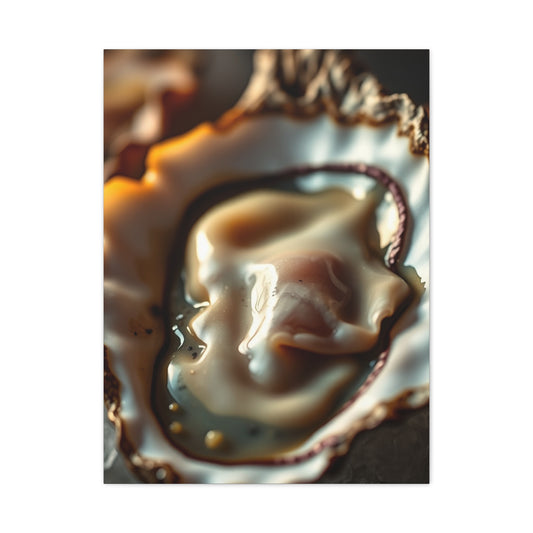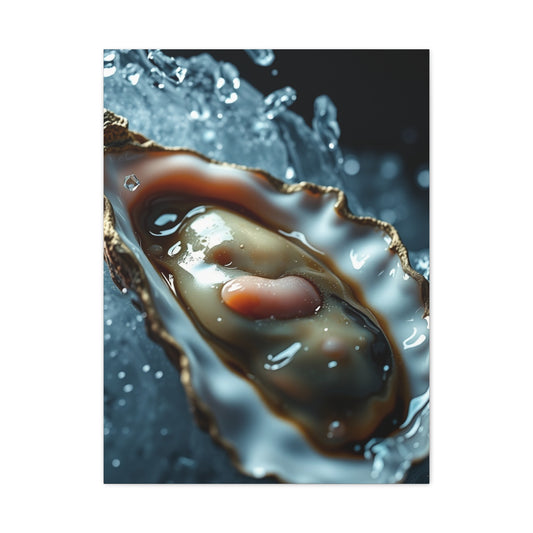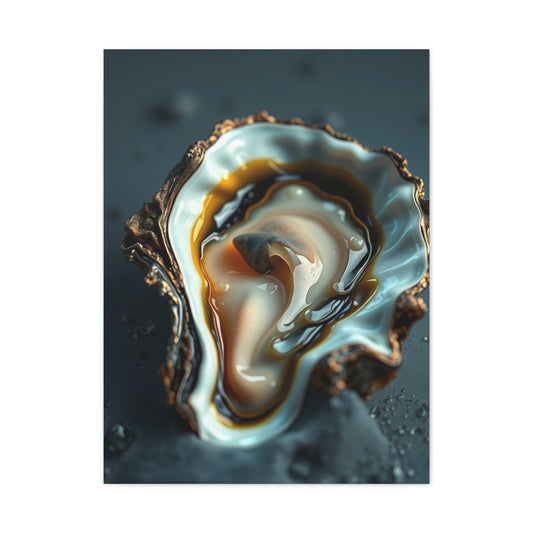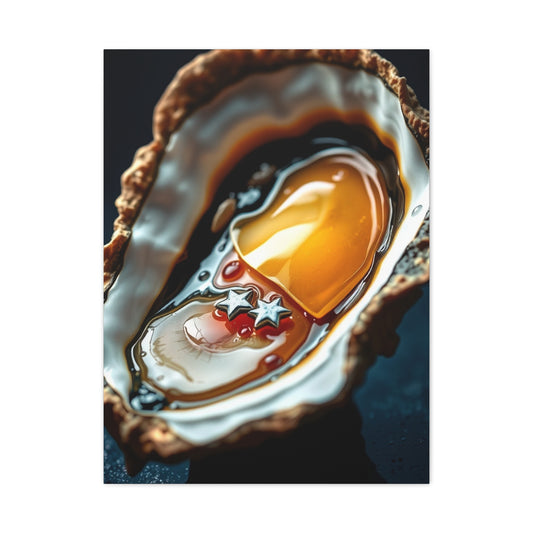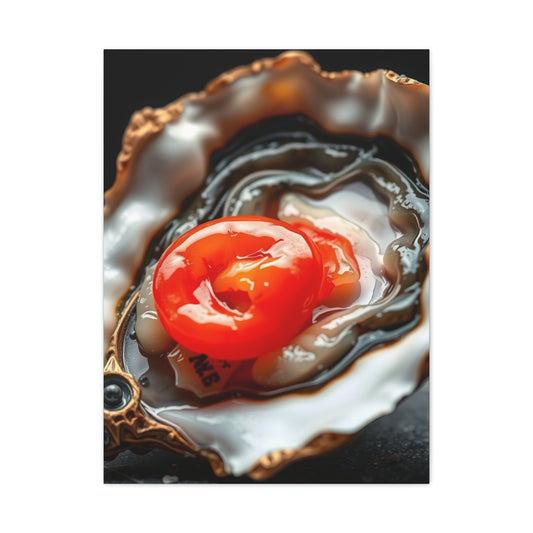Oyster Shell Wall Art Transformations: Unique Decor for Every Home
Designing a home that feels both inviting and distinctive often requires incorporating elements that reflect not only style but also nature’s timeless artistry. Oyster shell wall art provides a remarkable opportunity to achieve this balance, bringing together the beauty of the coastal environment with the sophistication of handcrafted decor. When placed strategically, these pieces do more than fill empty wall space—they set a tone of tranquility, refinement, and individuality. Unlike mass-produced artwork, oyster shells offer irregular forms, subtle shades of ivory and grey, and layered textures that seem almost sculptural. The result is a fusion of natural wonder and human creativity that cannot be replicated by synthetic substitutes.
Oyster shells carry a sense of origin and history, linked to coastal communities, maritime traditions, and the very rhythm of the sea. Transforming them into wall art extends their life, elevates their raw beauty, and reimagines them as treasured artifacts within the home. Their reflective surfaces interact with natural or artificial light, creating shadows and highlights that shift throughout the day, which makes them both art pieces and living installations. For homeowners seeking uniqueness, oyster shell wall art is more than decoration—it is a narrative woven from natural resources, cultural symbolism, and modern design innovation.
Historical Background
The use of shells in decoration is not a modern concept. Across centuries, civilizations have revered seashells for their spiritual symbolism, utility, and aesthetic charm. Oyster shells in particular were valued in many coastal societies not just as a food source but as ornamental items. Ancient artisans would embed shells into mosaics, adorn temples with them, or craft jewelry that symbolized wealth and connection to the sea. In certain cultures, shells were even considered protective talismans, believed to shield households from negative energies.
During the Renaissance and Baroque periods, shells were widely employed in decorative arts. Grottoes—lavish garden retreats designed in Europe—were often encrusted with shells, oysters included, to symbolize opulence and man’s ability to harmonize with nature. Later, in the Victorian era, shell art became popular as intricate designs were crafted for keepsakes and household adornments. The oyster, though humble in culinary use, rose to prominence in artistic expression through its unique layers, luminous sheen, and durable structure.
In more recent history, oyster shell wall art has evolved in coastal regions of the United States and Europe, where artisans began repurposing discarded shells from seafood industries into framed artwork, mirror embellishments, and architectural details. This shift not only reflected a continuation of shell art traditions but also aligned with growing awareness of sustainability. By salvaging oyster shells that would otherwise go to waste, contemporary creators uphold both heritage and ecological responsibility.
Core Concepts and Foundations
At the foundation of oyster shell wall art lies an appreciation for nature’s unrefined beauty. Unlike polished gemstones or artificially colored decor, oyster shells speak through irregularity and authenticity. Each shell carries its own story—etched with ridges, weathered by water, and shaded by time. This raw elegance is precisely what designers and homeowners find captivating.
The core concept extends beyond mere decoration; it encompasses symbolism. Oyster shells embody resilience, transformation, and hidden beauty, as they are organisms that protect and nurture pearls. Their use in wall art represents layers of meaning: the endurance of nature, the potential for discovery, and the quiet sophistication of coastal living.
In terms of design foundation, oyster shell wall art combines organic materials with structured arrangements. Whether laid in symmetrical rows, spiraled into intricate mandalas, or clustered for textural impact, shells offer versatility. They adapt to both minimalistic interiors, where a single framed piece suffices, and to grand statements, such as full wall installations resembling shimmering mosaics. The foundation also embraces a balance of material care and artistic placement. Proper cleaning, sealing, and arranging ensure that shells maintain durability while offering visual pleasure for years.
Types and Categories
Oyster shell wall art manifests in a wide spectrum of types and categories, each catering to different tastes, interiors, and levels of craftsmanship.
One common category is framed wall art, where oyster shells are meticulously arranged within a wooden or metal frame. These pieces can range from compact squares ideal for gallery walls to expansive rectangles that dominate an entryway. Framed designs often emphasize symmetry, patterns, or even abstract formations inspired by waves and coastal landscapes.
Another variation involves mirrors surrounded by oyster shells. The natural sheen of the shells pairs harmoniously with the reflective glass, creating a focal point that exudes coastal glamour. These mirrors often work well in bathrooms, foyers, or dressing areas, where both function and artistry converge.
Shadow boxes represent another creative avenue. By layering oyster shells with complementary elements like driftwood, sand, or coral, shadow boxes capture coastal narratives within three-dimensional frames. They serve not only as art but also as storytelling devices, preserving memories of the sea within an enclosed canvas.
For homeowners who prefer bold statements, full-panel oyster shell wall art installations provide an immersive effect. These can cover entire accent walls, transforming them into textural tapestries reminiscent of natural grottos. Such designs are often custom-made, blending shells of different shapes and hues to create depth and dimension.
Additionally, oyster shell mosaics stand as a refined category. By carefully breaking and arranging shell fragments, artisans craft detailed patterns or imagery, sometimes incorporating other natural materials like glass or stone. This category often appeals to those who appreciate precision and detailed artistry.
Practical Applications
The practical applications of oyster shell wall art are vast, extending from residential interiors to commercial environments. In homes, they can serve as conversation starters in living rooms, serene accents in bedrooms, or thematic features in beach houses. Bathrooms benefit particularly from oyster shell mirrors, where the shells’ reflective surfaces enhance brightness while reinforcing a spa-like ambiance.
In dining spaces, framed oyster shell panels can bring warmth and a subtle sense of celebration, reflecting the social and culinary connections tied to oysters themselves. Entryways and hallways become more engaging when adorned with these natural elements, creating inviting first impressions.
Commercial applications are equally compelling. Restaurants specializing in seafood often use oyster shell wall art to reinforce their brand identity and connect customers to the culinary journey. Boutique hotels and coastal resorts integrate oyster shell designs to evoke local character and immersive storytelling. Spas and wellness centers utilize these art pieces to amplify themes of relaxation, nature, and renewal.
From a practical standpoint, oyster shell wall art also supports sustainable interior practices. By reusing a natural byproduct of the food industry, designers and homeowners reduce waste and promote environmental consciousness. This dual benefit of beauty and sustainability enhances the relevance of oyster shell wall art in today’s world, where responsible consumption aligns with stylish living.
Moreover, maintenance of such pieces is relatively simple. Occasional dusting and mindful placement away from excessive humidity or direct sunlight are typically sufficient. When cared for properly, oyster shell wall art can last decades, aging gracefully and developing an even more distinctive patina over time.
Techniques and Methods
The process of creating oyster shell wall art demands both artistry and technical precision. While the shells themselves carry natural allure, their integration into design requires thoughtful planning, suitable materials, and skilled execution. The most common method begins with cleaning and curing. Fresh shells must be thoroughly scrubbed, boiled, and sun-dried to eliminate any residue. A clear sealant is often applied to preserve luster and protect against moisture damage, ensuring long-lasting beauty.
One method involves arranging whole shells on wooden panels or canvases. Artists often experiment with radial layouts, layering shells from a central focal point outward, producing spirals reminiscent of ocean waves. This approach emphasizes repetition, symmetry, and rhythm, transforming individual shells into cohesive compositions.
Another technique incorporates shell fragments. By breaking oysters into smaller pieces, designers craft mosaics with intricate patterns. This method allows for greater flexibility in shaping curves or replicating images such as coastal landscapes, marine life, or abstract forms. Adhesives with strong bonding capacity are critical here, ensuring shells remain firmly attached even in vertical or high-traffic settings.
Embedding oyster shells into plaster or resin surfaces is another method gaining attention. This process enables artisans to create seamless wall panels with shells partially immersed, giving the illusion of shells naturally embedded in stone. It also enhances durability while allowing the interplay of translucent layers and natural textures.
A more experimental method involves combining oyster shells with complementary natural elements. Pairing them with driftwood, sea glass, or coral produces mixed-media art that tells a richer narrative of the shoreline. Artists often rely on layering and contrast, using the roughness of driftwood to amplify the smooth iridescence of oyster shells.
Finally, advanced craftsmen explore sculptural installations where shells are arranged three-dimensionally, projecting from the wall to create tactile surfaces. Lighting plays a crucial role here, casting shadows that emphasize depth and texture. This technique transcends simple decoration, making oyster shell wall art an immersive experience within interior spaces.
Challenges and Common Mistakes
While oyster shell wall art offers immense potential, it also comes with challenges that both beginners and professionals must acknowledge. One of the primary issues lies in preparation. Many underestimate the importance of thorough cleaning, which can lead to lingering odors or eventual discoloration. Inadequately treated shells may also deteriorate over time, undermining the integrity of the artwork.
Adhesion mistakes are another frequent pitfall. Not all adhesives bond well with shells, and using unsuitable glue can result in shells detaching from surfaces. Lightweight adhesives might suffice for decorative shadow boxes, but fail in large installations. Proper selection of bonding agents and testing samples beforehand prevents costly errors.
Arrangement is another area where missteps occur. Oyster shells, by nature, vary in size and shape. Attempting to force uniformity often leads to unnatural or rigid compositions. Successful designs embrace irregularity, allowing shells to flow organically rather than adhering to overly rigid patterns. Novices sometimes crowd too many shells into small spaces, overwhelming the eye instead of achieving harmony.
Weight considerations also pose a challenge. Large oyster shell panels can become surprisingly heavy, requiring secure mounting hardware and reinforced walls. Ignoring weight distribution risks not only damages the art piece but also creates safety hazards.
Environmental conditions can also affect longevity. Excessive humidity, common in coastal homes, may weaken adhesives and encourage mold growth if the seals are not sealed correctly. Direct sunlight can cause fading of natural coloration over time. Placement strategies and protective coatings are essential to counter these risks.
Another common mistake lies in neglecting the broader design context. Oyster shell wall art, though striking, should harmonize with existing décor. Some decorators isolate shells without considering color palettes, textures, or spatial proportions, resulting in dissonance rather than cohesion. Integrating shells alongside complementary furnishings and tones ensures a seamless design narrative.
Trends and Future Outlook
As interior design evolves, oyster shell wall art continues to adapt, reflecting shifts in aesthetic preferences and cultural values. A prevailing trend centers on sustainability. Homeowners increasingly prioritize eco-conscious decor, and oyster shells, being a natural byproduct of the seafood industry, embody this movement. Repurposing shells reduces waste while adding authentic materiality to interiors. Future directions will likely expand this ethos, with more designers incorporating reclaimed shells sourced directly from local fisheries.
Minimalist interpretations are gaining popularity as well. Rather than creating overly elaborate mosaics, many modern interiors favor sparse, deliberate arrangements where a few shells are positioned with precision against neutral backgrounds. This approach highlights the shell’s natural form without overwhelming the space, aligning with contemporary minimalism.
Customization represents another emerging trend. With the rise of personalized interiors, clients increasingly request bespoke oyster shell wall art tailored to their homes. Artisans respond by integrating initials, family crests, or symbolic imagery within shell arrangements. Digital design tools also allow for pre-visualization, ensuring finished pieces match client expectations.
Technology is influencing the field, particularly through the use of resin casting and 3D modeling. Some designers embed oyster shells into translucent resin panels illuminated from behind, creating glowing wall features that blur the boundary between art and light installation. Advances in eco-friendly resins further enhance this practice, maintaining sustainability while broadening creative possibilities.
The future outlook also points toward interdisciplinary collaborations. Interior designers, marine conservationists, and artisans may increasingly join forces to produce oyster shell art that not only decorates but also educates about marine ecosystems. Exhibitions and hotel lobbies might showcase large-scale installations accompanied by narratives about oyster habitats and environmental stewardship.
Global influences are expected to enrich oyster shell wall art further. As cross-cultural design exchange grows, artisans may draw inspiration from traditional shell art in Asia, Africa, and Oceania, merging techniques and patterns into hybrid styles. Such fusion broadens the visual vocabulary of oyster shell art, ensuring its continued relevance in a diverse design landscape.
Expert Insights
Professionals in the fields of interior design, craftsmanship, and sustainability offer valuable perspectives on the growing significance of oyster shell wall art. Many emphasize that working with oyster shells demands patience and respect for irregularity. Unlike machine-cut tiles, shells refuse to conform to rigid geometry, compelling artists to approach each project as a dialogue with nature.
Design experts note that oyster shells possess remarkable versatility. They can enhance rustic cottages, contemporary lofts, and coastal retreats alike. The key lies in placement and scale. A small framed shell mosaic may suit a minimalist apartment, while a large oyster shell mirror may anchor a traditional coastal dining room. Experts advise homeowners to consider lighting carefully, as illumination accentuates the shells’ reflective qualities, creating dynamic visual effects.
Artisans often highlight the importance of quality preparation. Cleaning and sealing are not merely technical steps but acts of preservation, ensuring that the shells’ natural beauty endures. Skilled artists treat oyster shells much like fine wood or stone, where proper preparation enhances the final result.
Sustainability advocates emphasize the ecological dimension. Oysters play critical roles in marine ecosystems by filtering water and forming reef structures. By repurposing shells, artists help reduce waste and promote awareness of ocean conservation. Experts encourage consumers to source oyster shell art from artisans who practice responsible collection, ensuring no harm to live ecosystems.
In conversations with professional decorators, a recurring insight is the emotional impact of oyster shell wall art. Beyond aesthetics, shells evoke memory and nostalgia. For many, they recall seaside holidays, coastal heritage, or cultural rituals linked to the sea. Experts believe this emotional resonance is why oyster shell art transcends trends, remaining timeless across shifting design movements.
Another expert perspective highlights future innovation. Designers foresee oyster shells being combined with smart technology, such as backlit panels adjustable through mobile apps or shells integrated into acoustic panels that enhance sound quality while serving as decor. Such innovations demonstrate how oyster shell wall art can evolve alongside modern lifestyles, maintaining relevance while preserving natural authenticity.
Emerging Trends in Wall Art
The landscape of wall art has always mirrored the cultural, social, and environmental values of its time. As homes evolve into sanctuaries of personal expression, oyster shell wall art continues to occupy a distinctive niche, reflecting both natural beauty and artisanal craftsmanship. Several emerging trends demonstrate how this form of decoration is adapting to contemporary sensibilities while preserving its timeless appeal.
One prominent trend is the rise of artisanal minimalism. Designers are discovering that a single cluster of shells arranged with precision on a neutral canvas can evoke as much impact as a fully covered panel. This minimalism emphasizes the individuality of each shell, allowing its subtle textures and iridescence to shine. In an era where less is often more, oyster shells exemplify understated elegance.
Another notable movement is the embrace of biophilic design, where interiors are shaped to foster stronger connections with nature. Oyster shells, with their marine origins and organic contours, bring coastal ecosystems indoors, reinforcing the soothing effects of natural materials. Homes and workplaces infused with biophilic elements have been shown to promote relaxation, creativity, and well-being, making oyster shell art a desirable addition for those seeking serenity within their walls.
The fusion of oyster shells with contemporary mixed media represents yet another trend. Many artisans now combine shells with materials such as recycled glass, driftwood, or metallic finishes. These hybrid artworks create striking contrasts—smooth shells paired with rugged wood, or shimmering fragments set against matte stone—producing pieces that speak to the diversity of the natural world.
Global design influences are also reshaping oyster shell wall art. Artists are increasingly blending shell arrangements with motifs inspired by Asian, African, or Polynesian traditions. These cultural fusions enrich the visual vocabulary, giving rise to pieces that feel both local and cosmopolitan. Such works often symbolize cross-cultural harmony, making them ideal for homes that celebrate diversity and inclusivity.
Sustainability remains a guiding force in current trends. The repurposing of shells discarded from seafood industries aligns with eco-conscious living. Designers and consumers alike view oyster shell wall art not merely as decoration but as a statement of environmental responsibility. Future innovations may expand on this, such as incorporating shells into recycled resin panels or modular installations that reduce resource consumption while retaining aesthetic refinement.
Finally, the interplay between art and technology is shaping future directions. Backlit oyster shell panels, interactive lighting, and even projection mapping onto shell surfaces are transforming static wall decor into dynamic experiences. These innovations elevate oyster shell art beyond traditional boundaries, merging natural texture with modern interactivity.
Step-by-Step Guides
Preparing Oyster Shells for Artistic Use
The journey toward creating oyster shell wall art begins with careful preparation. Fresh shells must be cleansed thoroughly to ensure durability and prevent unwanted odors. Start by soaking the shells in a solution of warm water and mild vinegar, which loosens organic residue. Scrubbing gently with a stiff brush removes lingering deposits, while boiling the shells for a short period ensures complete sterilization. After drying them in the sunlight, apply a protective sealant to enhance the sheen and safeguard against environmental wear. This preparatory step not only preserves their natural beauty but also establishes a strong foundation for artistic expression.
Designing the Layout
A successful oyster shell composition requires foresight. Begin by visualizing the desired outcome—whether it is a radial burst, a layered mosaic, or a minimalist arrangement. Sketching the design on paper can serve as a guide, though many artists prefer to experiment by loosely arranging shells on the chosen surface before securing them. Balance is key: larger shells may serve as focal points, while smaller ones fill gaps or create flow. The arrangement should reflect both structure and spontaneity, blending intention with the natural irregularity of the shells.
Building a Framed Wall Piece
To construct a framed oyster shell wall art piece, gather a sturdy base such as a wooden board or stretched canvas. Mark out boundaries with light pencil strokes to maintain balance. Apply a high-strength adhesive in small sections, pressing each shell firmly until it bonds. Allow the adhesive to cure fully before moving on to the next cluster, preventing shifting. Once the arrangement is complete, secure the piece within a frame that complements the natural tones of the shells. Frames in weathered wood or brushed metal often enhance the organic aesthetic. Hang the finished piece at eye level to maximize its impact.
Crafting an Oyster Shell Mirror
Transforming a plain mirror into a statement piece involves layering oyster shells around its frame. Begin by measuring the circumference and dividing it into sections, ensuring symmetry. Attach larger shells at intervals to establish rhythm, then intersperse smaller shells to create density. Overlapping shells add dimension, while leaving slight gaps allows light to reflect between surfaces, intensifying their natural shimmer. Once dried, the mirror not only serves its practical purpose but also acts as a luminous centerpiece, reflecting both light and artistry.
Creating a Shadow Box Display
Shadow boxes provide depth and narrative potential. To build one, select a box frame deep enough to accommodate multiple layers of shells. Line the background with fabric, painted wood, or sand-textured paper to create context. Arrange shells in clusters or thematic patterns—perhaps spirals reminiscent of tides or asymmetrical layouts echoing natural shorelines. To enhance the coastal narrative, incorporate subtle accents like dried seaweed or fragments of driftwood, though the shells should remain dominant. The finished shadow box becomes a three-dimensional tableau that encapsulates the essence of the sea.
Constructing a Mosaic Panel
For those who enjoy intricate artistry, mosaics offer endless creative possibilities. Break oyster shells into smaller pieces using a hammer and protective cloth. Sort fragments by size and hue to streamline the process. On a primed wooden panel, sketch the desired design, whether abstract or representational. Apply adhesive to small areas and place fragments meticulously, building the composition piece by piece. Grouting between fragments can unify the design, though some artisans prefer to leave spaces unfilled to preserve organic irregularity. The final panel exudes complexity, inviting viewers to explore each tiny detail.
Exploring Three-Dimensional Installations
For bold statements, consider building a three-dimensional installation. Start with a sturdy backing wall or panel that can bear additional weight. Affix oyster shells at varying depths and angles, projecting outward to create tactile surfaces. Lighting plays a critical role in these works; direct spotlights accentuate shadows and highlights, while soft ambient light generates a more ethereal glow. Such installations transform walls into living landscapes, engaging not only sight but also touch and spatial awareness.
Finishing Touches and Maintenance
Once a piece is completed, protective measures ensure longevity. A final coat of clear varnish or eco-friendly sealant enhances sheen while guarding against dust and humidity. When displaying the piece, consider room placement carefully—avoiding areas with excessive sunlight or moisture prolongs durability. Maintenance involves gentle dusting with a soft cloth, refraining from abrasive cleaning methods that could dull the shells’ natural finish. With proper care, oyster shell wall art remains radiant for decades, aging gracefully like heirloom objects.
Cultural Symbolism and Deeper Meanings
Oyster shell wall art carries far more than visual appeal; it is steeped in cultural symbolism and layered significance. Across coastal societies, shells have long been associated with resilience, fertility, and renewal. The oyster itself, hidden within its rough exterior, represents the notion of beauty concealed within ordinary or humble forms. When repurposed into wall art, shells become tangible reminders of transformation and inner worth.
In folklore, oyster shells often symbolized protection, guarding homes against storms or misfortune. The placement of shells on walls extends this belief, infusing interior spaces with a sense of guardianship and continuity. In spiritual traditions, their layered formation mirrors the passage of time and the accumulation of experience. For many households, incorporating oyster shell wall art thus transcends aesthetics, embodying a personal narrative of perseverance, heritage, and interconnectedness with the sea.
Integration with Contemporary Interiors
The versatility of oyster shell wall art ensures it can harmonize with an array of interior design styles. In coastal-inspired homes, shells serve as natural extensions of the surrounding environment, reinforcing an atmosphere of relaxation and marine tranquility. Yet their appeal is not confined to seaside dwellings. Within urban lofts, oyster shells juxtapose industrial materials like steel and brick, softening the severity of hard lines with their organic irregularity.
In modern minimalist interiors, a single framed shell composition offers a focal point without overwhelming simplicity. Meanwhile, eclectic bohemian spaces welcome layered oyster shell installations, where their textures blend with woven textiles, exotic woods, and eclectic artifacts. Even in traditional homes, oyster shell mirrors or mosaics pair seamlessly with antique furnishings, bridging historical refinement with coastal freshness. The adaptability of oyster shell wall art ensures it resonates across diverse aesthetics, uniting natural authenticity with design sophistication.
Emotional Connection and Storytelling
Beyond its role as decoration, oyster shell wall art possesses the rare ability to awaken deep emotional connections. Each shell is a fragment of the ocean’s living history, once shaped by tides, currents, and the passing of seasons. Its ridges, textures, and subtle coloration hold the memory of saltwater journeys, storms weathered, and tranquil waves. When these shells are displayed upon walls, they invite viewers into that silent story, resonating with nostalgia, reverie, and the eternal rhythm of the sea.
For many individuals, oyster shell art carries a sense of remembrance. It may call to mind childhood summers spent exploring shorelines, gathering shells in pockets or pails. Others recall family traditions of seafood feasts, where oysters were not only sustenance but also part of cultural rituals and shared heritage. Still others find in the shells a connection to ancestral roots, echoing communities who lived by the water and drew life, livelihood, and meaning from its depths.
This narrative quality enriches interiors by transforming anonymous decor into a deeply personal expression. Unlike mass-produced prints or generic objects, oyster shell wall art carries unique marks of individuality, both in the shells themselves and in the stories they awaken. Guests encountering such pieces are often drawn to inquire about their origins, leading to conversations that weave personal histories into the design of the home. A single framed panel can therefore hold multiple layers of meaning: it is simultaneously an art piece, a souvenir of nature’s artistry, and a repository of personal memory.
The storytelling aspect extends to how oyster shells embody resilience and transformation. From a creature that spends its life anchored to rocks and reefs comes a shell that continues to serve after life has passed, reinvented into beauty. For homeowners and collectors, this becomes a powerful metaphor—reminding them that transformation, endurance, and hidden elegance are always possible. In this way, oyster shell wall art transcends ornamentation, becoming not merely a decorative object but a vessel of memory, resilience, and shared connection between people and the sea.
Large-Scale Installations and Architectural Applications
Oyster shells are not confined to small framed artworks or decorative mirrors; they hold enormous potential in the realm of large-scale installations and architectural design. Visionary designers and architects have begun experimenting with expansive compositions, where entire accent walls are clad in oyster shells, forming shimmering and tactile surfaces that rival the intricacy of mosaics or stonework. These installations transform plain walls into vibrant canvases of nature, creating immersive experiences rather than simple decoration.
The effect of such installations shifts with the light. During the day, natural sunlight grazes across the textured surfaces, emphasizing the ridges and pearly undertones of the shells. In the evening, strategically placed artificial lighting can enhance their iridescence, producing dynamic shadows and subtle glimmers. The result is an ever-changing artwork, alive with the interplay of shadow, glow, and reflection. Unlike static paintings or prints, oyster shell walls evolve visually across hours and seasons, enriching spaces with perpetual variation.
Architectural applications go beyond accent walls. Oyster shells can be carefully embedded into furniture and structural detailing, adding subtle refinement to functional pieces. Headboards adorned with oyster shell inlays become focal points in bedrooms, while cabinet doors accented with shells transform everyday storage into an artistic feature. Even ceilings, often overlooked in interior design, can be transformed with oyster shell panels that catch light from chandeliers or recessed fixtures, producing an atmosphere of coastal opulence.
Hospitality spaces have particularly embraced these possibilities. Restaurants specializing in seafood often incorporate oyster shell walls as both decor and brand identity, reinforcing the connection between cuisine and origin. Boutique hotels, especially in coastal destinations, utilize oyster shell installations in lobbies, hallways, and lounges to encapsulate local character and immerse guests in the spirit of place. These large-scale applications transcend mere aesthetics; they become architectural languages that tie the built environment to natural heritage, transforming spaces into cultural and sensory experiences.
Even in private residences, adventurous homeowners are commissioning full-scale oyster shell features. Dining rooms with oyster shell panels exude a celebratory atmosphere, while entryways adorned with shell mosaics offer striking first impressions that set the tone for the home. In such contexts, oyster shell wall art demonstrates its versatility: it is at once a material of humble origin and a medium of luxurious expression. Through large-scale installations, oyster shells ascend from decorative accents to architectural statements, embodying both the resilience of nature and the refinement of human design.
Sustainability and Environmental Resonance
The ecological dimension of oyster shell wall art cannot be overlooked. In many coastal regions, discarded shells accumulate as waste from the seafood industry, often filling landfills or being disposed of improperly. Repurposing these shells into artistic creations not only reduces environmental impact but also emphasizes principles of circular design, whereby byproducts are transformed into resources.
The environmental resonance extends further when viewed within the broader role of oysters in marine ecosystems. These organisms filter water, create habitats, and stabilize shorelines. By valuing oyster shells as art materials, society indirectly acknowledges the ecological importance of oysters themselves. This awareness fosters appreciation and, ideally, motivates conservation efforts. Sustainable oyster shell wall art thus symbolizes harmony between human creativity and environmental responsibility.
Customization and Personalization
A growing demand for customization has shaped the evolution of oyster shell wall art. Many homeowners seek designs that reflect their personal journeys, cultural backgrounds, or symbolic preferences. Artisans respond by creating bespoke compositions, sometimes embedding initials, family crests, or personalized motifs within shell arrangements.
Customization extends to material pairing. Clients may request oyster shells combined with reclaimed woods from ancestral properties, fragments of meaningful stones, or even artifacts collected during travels. These elements merge into highly personalized artworks that function as heirlooms, preserving both aesthetic charm and sentimental resonance. This shift toward individuality ensures that oyster shell wall art maintains relevance in a world where consumers increasingly value uniqueness over mass production.
Market Growth and Global Appeal
The appeal of oyster shell wall art has grown steadily, extending far beyond coastal regions. With the globalization of design trends, these natural artworks now find homes in cities, resorts, and even inland spaces where residents seek a touch of coastal serenity. Online marketplaces and artisan platforms have amplified accessibility, enabling collectors worldwide to acquire handcrafted shell art directly from creators.
Market growth has also been fueled by interior design movements that prioritize authenticity. Consumers are increasingly disenchanted with factory-produced decor and instead seek pieces infused with story and craftsmanship. Oyster shell wall art embodies this authenticity, standing apart as a creation shaped jointly by nature and artisan skill. Its global appeal lies not only in its beauty but also in its capacity to connect distant households with the rhythm of the sea.
Challenges for the Future
Despite its many strengths, oyster shell wall art faces challenges that may influence its trajectory. One concern is supply sustainability. While shells are abundant in some regions, inconsistent collection methods or overexploitation could create ecological imbalances. Ensuring that shells are sourced responsibly is critical for maintaining both artistry and environmental integrity.
Another challenge lies in accessibility. High-quality oyster shell artworks often require considerable labor, leading to elevated costs. This can limit their reach to affluent markets, leaving broader audiences underserved. Artisans must balance the demands of craftsmanship with affordability to sustain growth.
Finally, there is the risk of commodification. As oyster shell wall art becomes more popular, mass-produced imitations may emerge, diluting authenticity and undermining artisanal livelihoods. Protecting the uniqueness of handmade craftsmanship while adapting to broader markets will remain an ongoing challenge.
Conclusion:
Oyster shell wall art embodies a rare synthesis of nature’s artistry, cultural symbolism, and human creativity. From its historical roots in decorative traditions to its modern interpretations in sustainable and personalized design, oyster shells have proven to be more than simple remnants of the sea. They are vessels of meaning, resilience, and beauty, carrying stories that resonate across time and place.
The appeal of oyster shell art lies not only in its aesthetic qualities but also in its layered significance. It transforms discarded byproducts into treasured decor, connects interior spaces with marine environments, and fosters emotional connections through memory and storytelling. Its adaptability across interior styles—from coastal retreats to urban lofts—ensures its continuing relevance in a dynamic design landscape.
Looking forward, oyster shell wall art stands poised at the intersection of sustainability, innovation, and cultural expression. Whether through minimalistic compositions, large-scale installations, or personalized heirlooms, it will continue to evolve alongside shifting values. As long as people seek authenticity, connection with nature, and artistry infused with meaning, oyster shells will retain their place upon our walls, shimmering reminders of the ocean’s enduring gifts.



